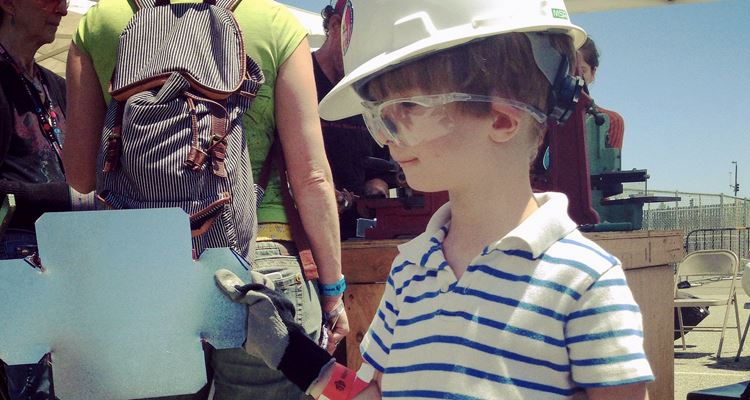I recently returned from what’s possibly the largest annual gathering of educators interested in all facets of technology education. Sponsored by the International Society for Technology in Education (ISTE) I joined 22,000 peers last month in Atlanta, where we were surrounded by 21st century themes that are transforming American education. Among them, of course, was the Maker Movement.
All of the items that are made, or “invented,” represent the best of design-test-improve, with the focus on creating something new, usually to solve a specific problem. All of them involve STEM, which I’ve long maintained is a crucial element of our education system and future success of our students.
Sometimes, the problem is whimsical (sculptures that spew fire as dragons) and sometimes they solve broad, useful problems. For sure, makers methodologies are constructivist and problem-based. These solutions are fueled by tools that our fathers and grandfathers could not conceive: 3D printers, microprocessors, LED lamps, wearable technologies, and “smart” materials. Thus the inventors of yesterday have become the “hackers” and makers of today.
This is big.
In two years, the movement has gone from a kid making stuff out of cardboard to students creating high-tech creations around the world. The first ever White House Maker Faire, modeled after similar events in the U.S. and abroad, took place in June.
The last Maker Faire drew 150,000 students and adults to San Mateo, California, where everything from Mentos-propelled fountains to bicycle-powered rock bands flooded the Faire in the spirit of show-and-tell. Mini-Maker Faires have also evolved in places like New York, Anchorage and Rome, Italy. The event and movement have spawned TEDTalks and NPR stories.
The Maker Movement is a sure sign education is changing, and fast. What could be more engaging than using a 3D printer to create a prototype, in contrast to a “flat”, two-dimensional diagram? Websites like Thingverse are like toy chests for those who want to dabble in 3D printing. Lego and Vex now have easily accessible robotics kits, and the circuits in these kits are no longer akin to “rocket science.” Inexpensive and variable computing platforms are also now available for a generation that expects to be able to use a smartphone, a tablet and a laptop readily. These developments have led to “makerspaces” in classrooms and learning centers across the country. Communities and classrooms increasingly are providing room and equipment for these areas of innovation.
In K12’s Physical Science course, students create a motor from parts with a how-to video, a virtual lab on motors, and in some cases, all of the simple equipment needed to make a motor. In the future, I expect entire courses to be conceived around this philosophy, which amounts to supporting the most engaging environment possible for learning. What would your students like to make? What problems will they solve?
To be sure, these are signs that it’s an exciting time for education and a promising time for kids to dream big about their futures.
Image credit: Maker Faire





































